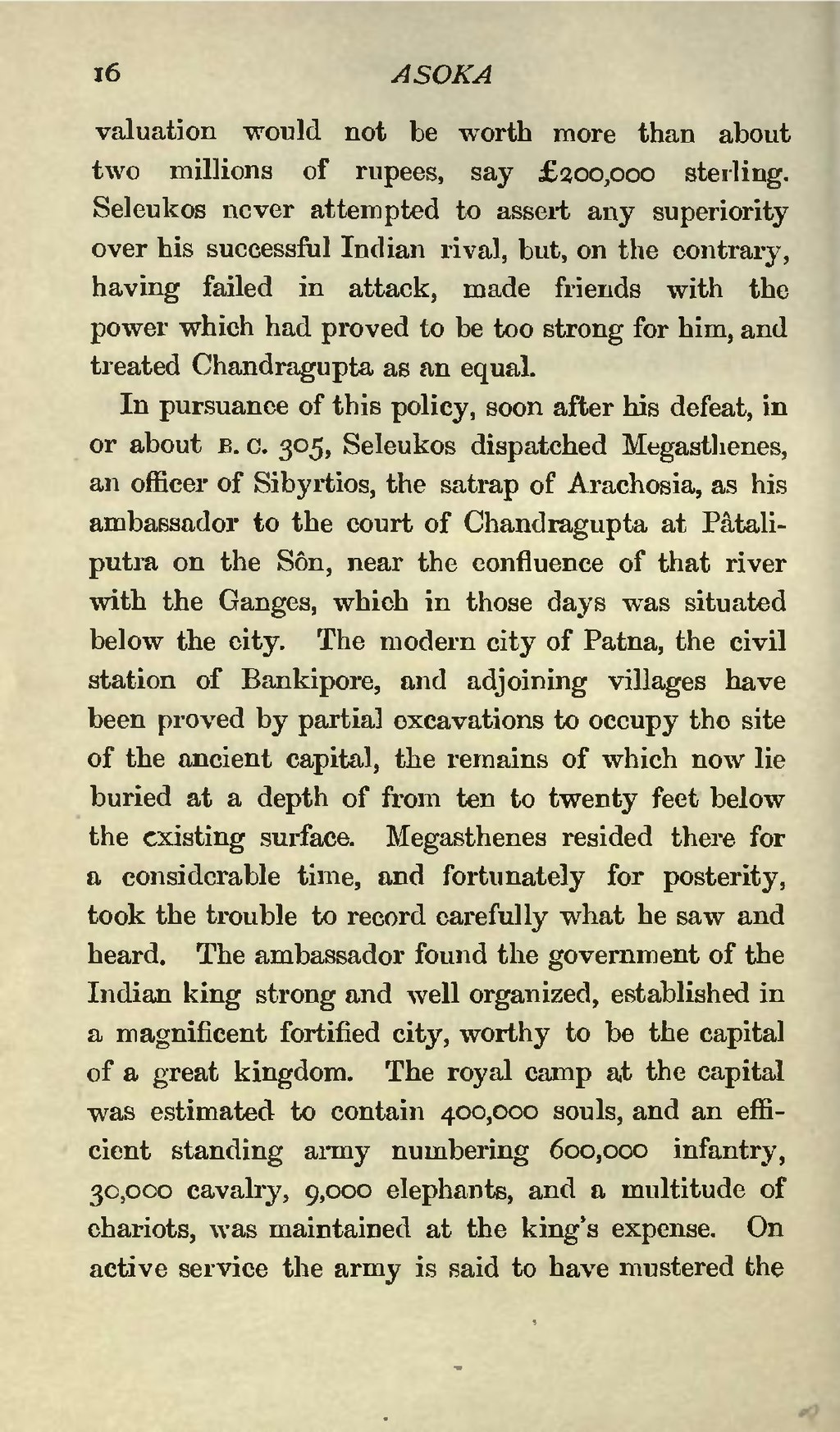valuation would not be worth more than about two millions of rupees, say £200,000 sterling. Seleukos never attempted to assert any superiority over his successful Indian rival, but, on the contrary, having failed in attack, made friends with the power which had proved to be too strong for him, and treated Chandragupta as an equal.
In pursuance of this policy, soon after his defeat, in or about B. C. 305, Seleukos dispatched Megasthenes, an officer of Sibyrtios, the satrap of Arachosia, as his ambassador to the court of Chandragupta at Pâtaliputra on the Sôn, near the confluence of that river with the Ganges, which in those days was situated below the city. The modern city of Patna, the civil station of Bankipore, and adjoining villages have been proved by partial excavations to occupy the site of the ancient capital, the remains of which now lie buried at a depth of from ten to twenty feet below the existing surface. Megasthenes resided there for a considerable time, and fortunately for posterity, took the trouble to record carefully what he saw and heard. The ambassador found the government of the Indian king strong and well organized, established in a magnificent fortified city, worthy to be the capital of a great kingdom. The royal camp at the capital was estimated to contain 400,000 souls, and an efficient standing army numbering 600,000 infantry, 30,000 cavalry, 9,000 elephants, and a multitude of chariots, was maintained at the king's expense. On active service the army is said to have mustered the
